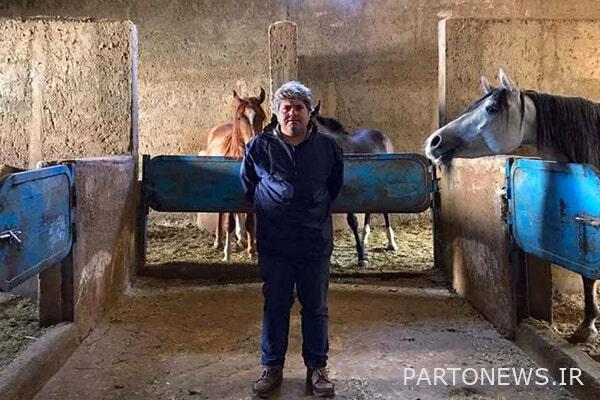The atmosphere of Iranian cinema is not normal/ I don’t like the direct treatment of social problems in documentaries

Alireza Rasoulinejad believes that the “Eastwood” documentary, in addition to being a self-portrait, is a portrait of Eastwood as well as a portrait of life in a modern city.
Charso Press: The documentary film “Eastwood” directed by Alireza Rasoulinejad, which participated in the national cinema section of the Truth Cinema Festival last year, has recently started its online screening.
This documentary has been screened in Warsaw and Copenhagen Film Festivals in addition to the Truth Cinema Festival. “Eastwood”, whose title may make movie lovers curious, is not only a work related to cinema and seventh art lovers, but it can be considered an ethnographic documentary about the living conditions in Sirjan, which, under the pretext of the existence of a special character and following it, the concerns of presents itself.
On the pretext of the online release of “Eastwood”, we had a conversation with the director of this work, which you can read below:
The decision to make Eastwood’s documentary seems to have been taken from a portrait idea and then partially turned into a work in the form of ethnography. How was this structure formed?
I always wanted to make a film about my hometown, Sirjan. I have been thinking about this issue for years until a few years ago I came across the news of “Example Garden” in Sirjan in a local newspaper. The spark of the film was struck there and the idea gradually took off and became “Eastwood”. As mentioned in the film, I actually immigrated to Tehran a few decades ago with some cassette tapes and some VHS movies from filmmakers like Clint Eastwood. The movie “Eastwood” is both a self-portrait and a portrait of Mr. Eastwood and a portrait of life in a modern city.
Addressing the social, cultural and environmental problems of Sirjan seems to be formed from a series of researches. What was your source for this research and was this research done during filming or before filming?
The issues and problems raised in the film are not only related to Sirjan city, it is a nationwide problem that most Iranian cities are involved in. Most of us are more or less familiar with these problems and it does not require detailed research; However, we tried to research these problems both before filming and during the work.
On what basis were the parts of Clint Eastwood’s films that are shown in parts of this documentary selected?
The narrator of the film remembers scenes from Eastwood based on the situations in which he is narrating his past memories. In fact, the locations and the mood of the situations evoke these scenes. These pieces were chosen based on those associations. In terms of weather and geography, Sirjan reminded me of Eastwood’s films, both his western films and his urban and police films.
Have you thought about the fact that audiences who are not familiar with Clint Eastwood’s cinema can communicate with him?
Fortunately, most of Clint Eastwood’s films are story-driven and exciting, and most people in the world relate to his films. In this sense, there was no problem. We even had good feedback, both at the Copenhagen, Warsaw and Montreal festivals, and in the few days since its online release. In my opinion, the use of these pieces of films added a cinematic and cinephilic aspect to the film, which was an interesting experience in its own way.
In the screening and discussion session of this documentary at the Center’s Truth Hall, you introduced it as a hybrid work. Why do you consider “Eastwood” to be such a work?
Of course, whether “Eastwood” is a hybrid film or not, cinema professors, critics and academics should say. Personally, I am not very interested in these divisions and classifications. I mentioned the hybrid movie only because the host of the program emphasized that the movie “Eastwood” is a movie. Because I think it is a combination of traditional forms and shapes of documentary films. In fact, the combination or hybrid and interaction of those forms has formed “Eastwood”.
For example, the technique of talking with reality and the interference of subjectivity in external reality is very pervasive in Eastwood’s film, or the use of multiple tones and borrowing from machiometry has given the film a hybrid mood. Anyway, I hope this issue will be discussed more in the continuation of the release of this film.
Environmental and social concerns are also raised in your work. To what extent can documentary works play a role in solving such problems?
In its general form, documentary cinema directly deals with social problems in most countries and is popular with students, journalists and the educated class, and is often broadcasted on special television channels. Personally, I am not very interested in this type of documentaries. In Eastwood’s film and my previous films, I have dealt with social issues and problems through the mediation of various forms of expression, as well as the interference of mentality and imagination in reality.
As a documentary maker who has created several remarkable works over the years, how do you evaluate the state of documentary cinema and the view of cinema authorities towards this cinema?
I don’t have much opinion about this issue, the volume of film production in Iran is high and no government has the ability to respond and manage this situation. In the whole atmosphere of Iranian cinema, whether documentary or fiction, it is not a natural atmosphere!
///.

